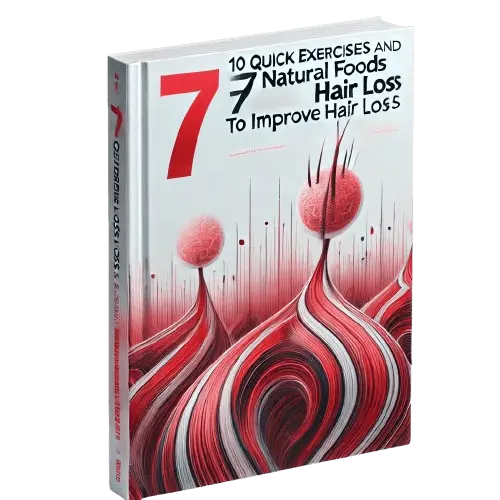Why Progesterone Might Be Causing Your Hair Loss
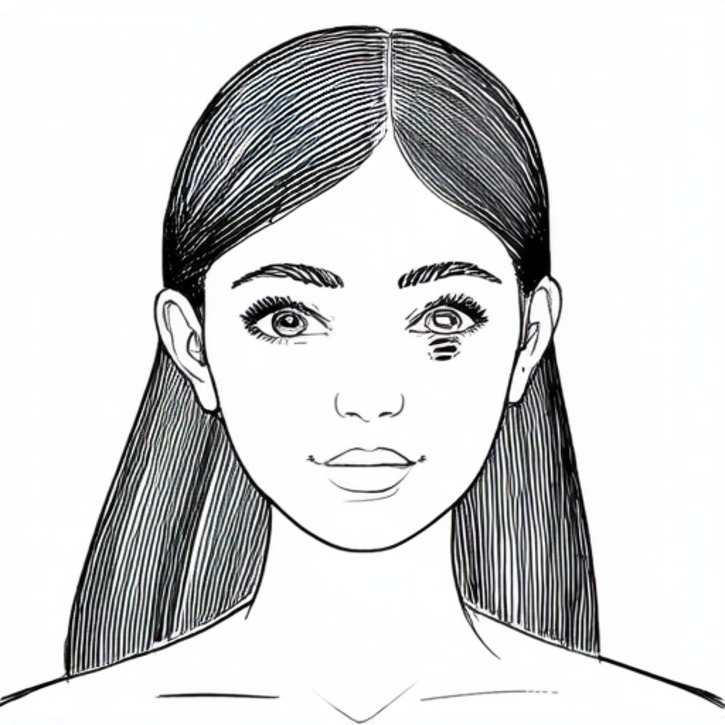
Getting to Know Progesterone Hair Loss
Have you ever wondered why your hair seems to thin or shed unexpectedly? Many people are starting to pay closer attention to how hormones, especially progesterone, might be affecting their hair health. Our hormones are such important players in our overall well-being that even a tiny shift can have a big impact on our locks. In this post, we'll chat about what progesterone hair loss is all about, why you should care, and how a better grasp on these hormonal influences might empower you to take action. We’re breaking down the complex dance between progesterone and your hair’s natural growth cycles, highlighting common triggers and telltale signs. If you’ve noticed unexplained thinning or extra strands on your brush, this guide might be just what you need to understand how hormonal imbalances could be part of your hair loss puzzle.
What Exactly Is Progesterone Hair Loss and Why Should You Care?
Simply put, progesterone hair loss is when your hair starts to thin or fall out more than usual, and many believe it’s linked to changes or imbalances in your progesterone levels. Progesterone isn’t just key to your reproductive health—it also plays a role in keeping your hair follicles in tip-top shape. This matters because losing hair isn’t just a physical inconvenience; it can hit your self-esteem hard too. While science is still piecing together the full picture of how progesterone fluctuations tie into hair loss, plenty of experts and folks dealing with hair issues have noticed a connection between their hormone levels and their hair’s behavior. Spotting the early signs of this imbalance can be your first step towards managing and treating the condition before it worsens.
Hormones, Hair Health, and Progesterone Hair Loss
Hormones are like the conductors of a symphony, orchestrating countless functions in our bodies, including hair health. Progesterone, in particular, works in tandem with other hormones to keep your hair’s growth cycle humming along smoothly. When progesterone levels fall out of sync, it can throw the whole hair cycle off balance, which might mean more hair shedding or thinning over time. This imbalance can affect not just how thick your hair looks, but also its quality and the overall condition of your scalp. Understanding how progesterone mingles with other hormones is key; it helps explain why some people might be more prone to hair loss when their hormone levels take a spin. Essentially, even small shifts in your hormone levels can make a big difference in your hair’s appearance.
The Nuts and Bolts: How Progesterone Might Be Triggering Hair Loss
When we talk about progesterone hair loss, it helps to know a bit about what’s happening inside your body. Research suggests that progesterone supports the anagen phase—the active growth phase—of your hair cycle. So, if there’s a sudden dip or imbalance in progesterone, your hair might jump the gun and move into the telogen, or resting phase, too early, which leads to more shedding. On top of that, these hormonal shifts can make your hair follicles more susceptible to other triggers, whether they’re environmental or genetic. While there’s still a lot for science to uncover, there’s growing evidence that progesterone is a big player in the hair growth game, and understanding this can help pave the way for better management strategies.
Why The Ancient Samurai Warriors Never Lost Their Hair…
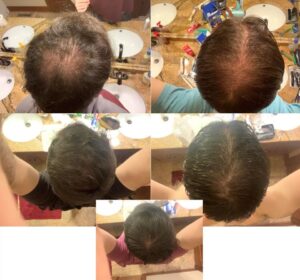
guaranteed to work for any men or women out there...
Watch nowProgesterone’s Role in Your Body and Its Link to Hair Loss
Progesterone and Your Hair’s Natural Rhythm
Progesterone is deeply involved in orchestrating the natural cycle of hair growth. Your hair goes through a rhythmic pattern: a growth phase (anagen), a short regression stage (catagen), and a resting phase (telogen). When everything’s balanced, progesterone helps keep those hair follicles working at their best, promoting thick and healthy hair. However, stress, lifestyle changes, or underlying health issues can tip your progesterone levels out of balance, potentially causing an early jump from the active growth phase to the resting phase. This premature shift can result in noticeable thinning and hair loss. Getting a handle on how progesterone influences these cycles can shed light on why hormonal glitches might lead to hair loss.
How Progesterone Imbalances Can Lead to Hair Loss
It turns out that when your progesterone levels are off, it’s not just your reproductive health that suffers—your hair can take a hit too. Whether it’s too little or too much progesterone, the timing for keeping your hair in its growth phase gets thrown off, nudging it into the shedding phase a bit too soon. Factors like aging, menopause, certain medications, or even just high levels of stress can tip the scales. People dealing with this kind of hair loss often notice not only thinning but also a decline in overall hair quality. The takeaway? Keeping your hormones in check might be a vital step in preserving a full head of hair.
The Ripple Effect: How Hormonal Fluctuations Impact Hair
Hormonal swings are just part of life, but for some, they come with an unwelcome side effect—hair loss. Women, for instance, might notice changes in their hair during menopause or at various points in their menstrual cycle, and men aren’t completely off the hook either. Fluctuations in progesterone can disrupt the timing of your hair cycles, leading to increased shedding and a slowdown in new hair growth. Recognizing that these hormonal ups and downs are more than just a natural part of aging—they can actually be a trigger for hair loss—might be just the push you need to look for balanced solutions and seek professional advice.
What’s Behind the Scenes: Identifying Progesterone Hair Loss Triggers
Everyday Culprits: Lifestyle and Environmental Triggers
It’s not just hormones that can stir up hair loss—your daily habits and surroundings play a part too. A diet that’s missing key nutrients, ongoing high stress, and exposure to environmental toxins can all add fuel to the fire when it comes to progesterone hair loss. For example, lacking vital vitamins and minerals like zinc, iron, and vitamin D can weaken your hair’s structure, prompting it to shed. Plus, harsh chemicals in some hair care products or pollutants in the air can further irritate your scalp. These internal and external stressors can work together to create a perfect storm for hair loss. By rethinking your lifestyle choices and making some smart tweaks, you could ease the impact of these triggers and take back control of your hair’s health.
Top Trichologist: Do This To Your Scalp To Regrow A Full Head Of Hair
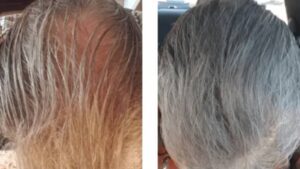
Completely natural and dirt cheap way that makes it possible for you to finally regrow all your hair back.
Try this at homeHealth Conditions That Could Be Playing a Role
Sometimes the trouble starts from within. Health issues like polycystic ovary syndrome (PCOS), thyroid disorders, or even autoimmune diseases can upset your hormone harmony, including those all-important progesterone levels. When these conditions interfere with your body's normal hormonal rhythm, you might see an early dive into the resting phase of your hair growth cycle, leading to premature shedding. If you’re faced with these challenges, it’s crucial to address the underlying condition. A chat with your healthcare provider, along with a few tests, can help pinpoint if these issues are behind your hair troubles, paving the way for a treatment plan that addresses both the symptoms and the root cause.
Spotting the Signs: How to Recognize Progesterone Hair Loss
Early Warnings You Shouldn’t Ignore
Catching the early signs of progesterone hair loss can really make a difference. You might start to notice subtle changes—like your hair thinning gradually around the crown, more hair coming out when washing or styling, or even a slight change in texture. Sometimes, you may even see more of your scalp than before. These signs might feel minor at first, but they can be a red flag that your hormone levels are off-kilter. Keeping an eye on these early indicators and considering professional advice when they persist could help you take timely action and set up preventive measures to keep your hair looking its best.
Visible Changes and Scalp Signs
As progesterone levels fluctuate, it’s not just your hair that tells the tale—the scalp often does too. Some people notice their scalp becoming oilier, drier, or even slightly irritated, and in some cases, small bald patches can start to appear. These changes in your scalp can be a signal that hormonal imbalances are stirring things up beneath the surface. So, if you observe any shifts in your scalp’s texture, color, or overall feel along with hair thinning, it might be time to take a closer look at what your hormones are doing.
When It’s Time to See a Specialist
While a few stray hairs here and there can be perfectly normal, consistent and noticeable hair loss may be a sign that something more is going on. If you start to see increased thinning, discernible changes in scalp conditions, or even clumps of hair coming out, it might be time to consult a specialist. A dermatologist or endocrinologist who knows their stuff about hair loss can help determine if progesterone imbalances are the culprit. With detailed evaluations like hormonal assays and scalp analyses, a professional can tailor a treatment plan that targets the underlying issue instead of just masking the symptoms. Early intervention could not only slow down further hair loss but also protect your overall well-being.
Watch Your Hair Come Back FASTER Than You EVER Dreamed Possible
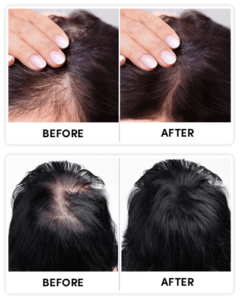
WITHOUT Expensive Medications, Lasers, or Painful Surgeries!
Learn moreHow Progesterone Hair Loss Gets Diagnosed: Tests and Evaluations
The Role of Hormone Panels
Diagnosing progesterone hair loss usually kicks off with a detailed hormone panel. These tests check levels of not just progesterone and estrogen, but sometimes thyroid and adrenal function too. The results can give you (and your doctor) a peek into your body’s inner workings and help pinpoint whether hormonal imbalances are to blame for your hair loss. Basically, these panels give a snapshot of your molecular landscape and help differentiate between hair loss from progesterone issues and other causes like stress or genetics. With clear data in hand, your healthcare provider can tailor a strategy that tackles the specific problem head-on.
Other Key Medical Tests
Along with hormone panels, there are a few other tests that might come into play when assessing progesterone hair loss. Blood tests can help uncover nutritional deficiencies or inflammation markers that influence hair health, and in some cases, your doctor might even suggest a scalp biopsy. This small procedure digs deeper into the health of your hair follicles, ruling out other conditions like alopecia areata or fungal infections. When these diagnostic tools are used together, they paint a comprehensive picture of what’s triggering your hair loss, ensuring that no potential factor is overlooked. This thorough approach is key for crafting a treatment plan that’s just right for you.
How to Tell Progesterone Hair Loss Apart from Other Types
Figuring out whether your hair loss is due to progesterone imbalances or something else can be a bit of a detective job. Since hair can fall out for a variety of reasons—from stress to genetic predispositions—getting to the bottom of the cause often requires careful observation and testing. Doctors usually combine your personal history with hormonal and nutritional tests to compare your symptoms with those seen in conditions like androgenic alopecia or telogen effluvium. By zeroing in on how progesterone levels interact with your hair follicles, specialists can better determine if progesterone hair loss is indeed at play. This kind of precision is important because the right treatment depends on targeting the exact imbalance rather than using a one-size-fits-all solution.
Looking Forward: Treatment Options and Managing Progesterone Hair Loss
Medical Therapies to Tackle Progesterone Hair Loss
When it comes to managing progesterone hair loss, there’s no magic bullet—but there are several promising approaches. Medical therapies might include everything from topical treatments and supplements to hormone regulation therapies that help balance the scales. The goal here is not just to slow down hair loss, but also to create an environment where your hair can thrive again. With a treatment plan tailored to your specific situation, you and your healthcare provider can work together to address both the symptoms and the root causes of your hair loss. This proactive approach can go a long way toward restoring not just your hair, but also your confidence.

